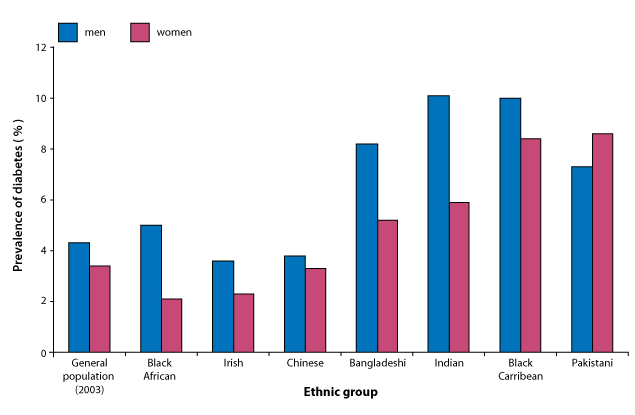Diagnosis of diabetes
Type 1 diabetes
The onset of type 1 diabetes is rapid and its symptoms are likely to be noticed through:
- Excessive thirst
- Weight loss
- Drowsiness
- In extreme cases, coma.
- Blood glucose level above 10 millimoles per litre (mmol/l).
- Muscle cramps
- Gastrointestinal symptoms such as nausea and vomiting, abdominal pain and changes in bowel movements
- Diabetic ketoacidosis (DKA)
- Polyuria (excessive urine production)
- Urinary tract infections

A simple test strip can indicate the presence of glucose in the urine.
Images courtesy of: Wellcome Images
Type 2 diabetes
This form of diabetes develops much more gradually and so symptoms may not be apparent for many years. It is often diagnosed during healthy screening tests where the blood sugar level is found to be elevated despite there being no symptoms of diabetes.
Oral Glucose Tolerance Test (OGTT)
Simple blood and urine tests may be sufficient to diagnose diabetes in some people. Others may have to take an oral glucose tolerance test (OGTT) if other blood and urine tests are inconclusive.
Patients are not allowed to eat for at least 12 hours before the test. A blood sample is then taken to measure the patient's fasting blood glucose level.
They are then given a drink containing 75g of glucose. This is quickly absorbed and their blood glucose level is measured over the next two hours.
Blood glucose in the diabetic rises and stays above normal.
The healthy person regulates their glucose back to normal.
Plasma venous glucose concentrations used for diagnosis of diabetes
| Plasma (mmol / l) | |
|---|---|
| Venous | |
| Fasting | ≥ 7 |
| 2 hours post-glucose | ≥ 11.1 |
Question 3
In the UK, there are significant variations in the frequency of type 2 diabetes between different population groups.
Look at the graph and answer the question.

Rates of diabetes in different ethnic groups in England
The graph shows the incidence of diabetes in adults over the age of 16 from different population groups (type 1 plus type 2). Describe the likely factors that influence the different rates of diabetes. Suggest how these factors could be further investigated.
(C 6 H 10 O 5 ) n , that is stored in the liver and in muscles and can be converted back into glucose when needed by the body.














